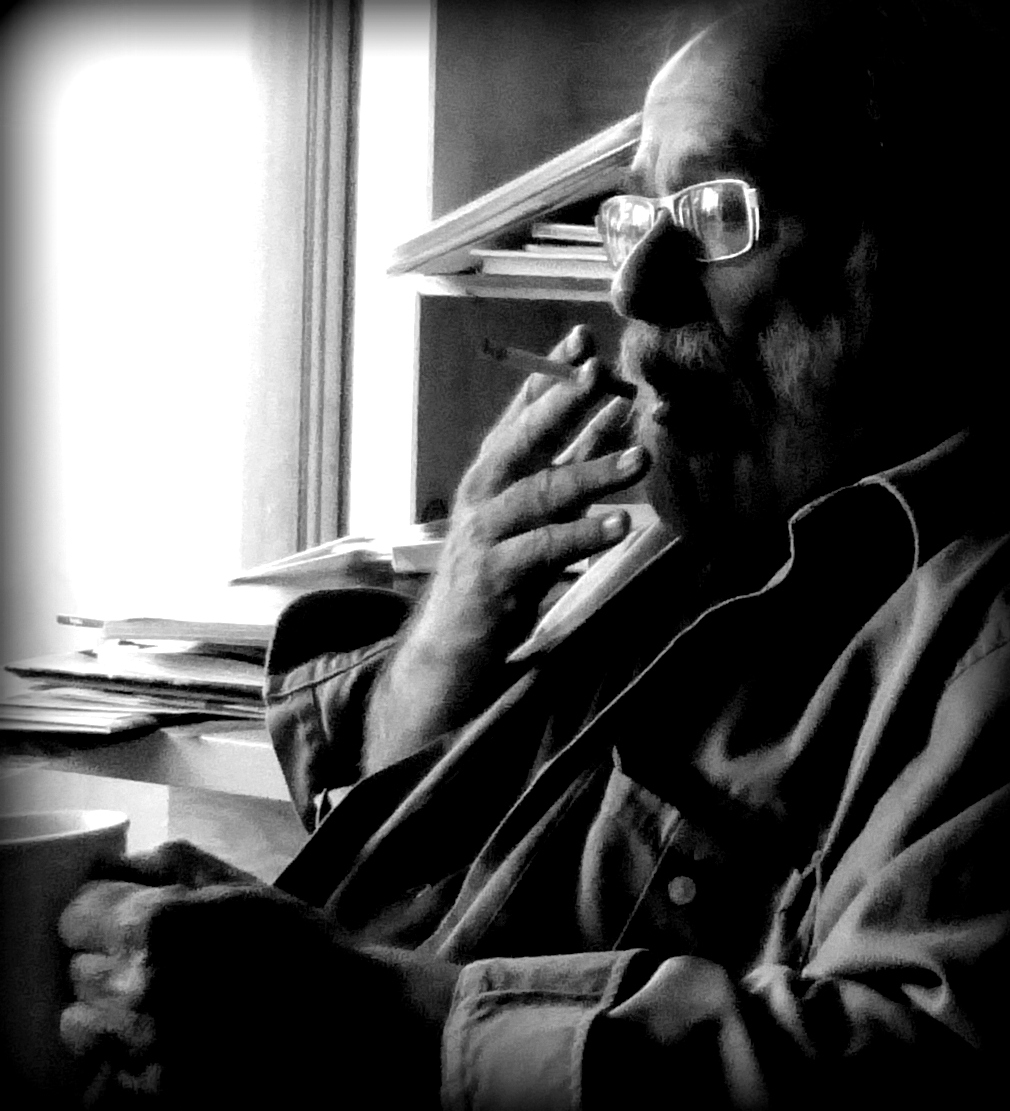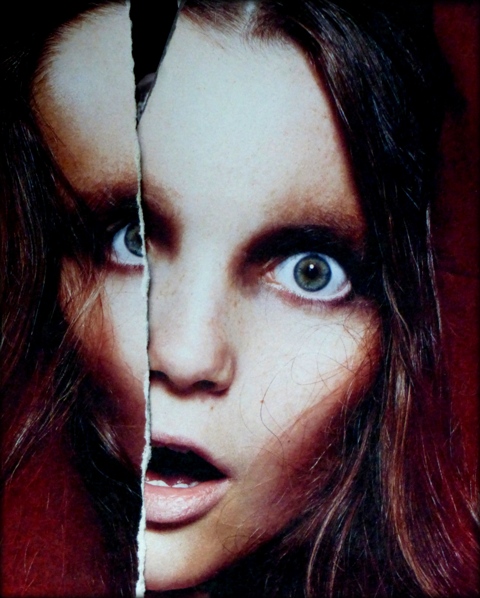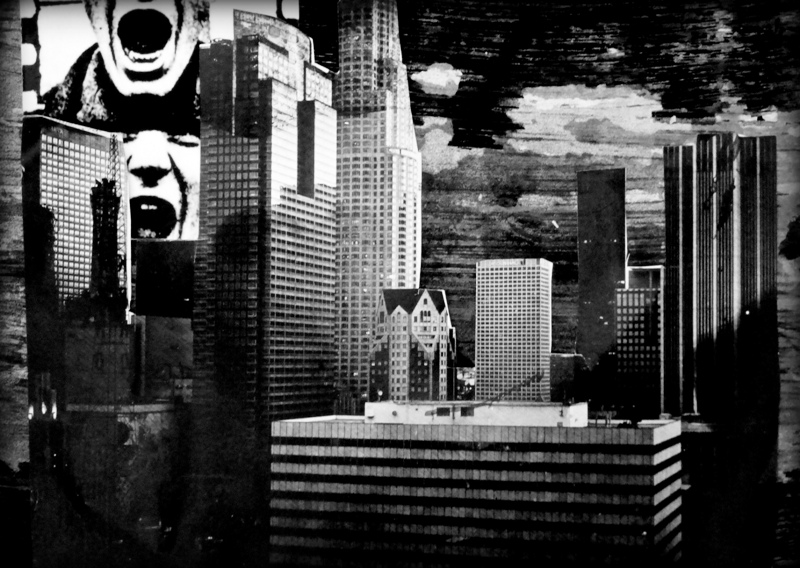 Lee Lamothe. Photo: Lucy White
Lee Lamothe. Photo: Lucy White
Interview with Lee Lamothe (LL) by Nika Teper (NT)
Lee Lamothe’s photomontages at Yumart Gallery allude to place, scenario/circumstance and action/reaction. His collection and composition of found and photographed images, once extracted, are then peeled, layered, repeated and rephotographed. The cinematics of space and person recall a broader narrative.
 Lee Lamothe, We are the Mad Collages of Each Other #1, 2016, photomontage, 17 x 13 1/4 inches. Image courtesy of Yumart Gallery
Lee Lamothe, We are the Mad Collages of Each Other #1, 2016, photomontage, 17 x 13 1/4 inches. Image courtesy of Yumart Gallery
NT: It seems that each work exists within a context. When creating these compositions do you conceive of a hypothetical space and time or are they each rooted in a real place and circumstance?
LL: I believe in the lucky accident, a blessing as the folks in China once told me. Doing collages and photomontages is, to me, an adventure in falling down the stairs. My difficulty is knowing when to start and when to stop. My studio is filled with works that might be finished or they might not be. They’ll let me know.
NT: How do you decide upon the size of each print? Since there is so much content, what do you think a larger scale would do to the work? Do you aim to maintain consistency throughout the collection?
LL: I’d love to print everything to what I refer to as Rauschenbergian scale – but that is very difficult to do. I like real big or real small, perhaps down to a postcard size. Likely this year I’ll posterize an image and hire some Kensington Market entrepreneurs to paper the town with it – no name or title or gallery, just a picture on a construction hardboard. I think this is a democratic and non-capitalist way to get the image out there. Many people don’t go to galleries.
 Lee Lamothe, #18 Pen, 2016, photomontage, 8 x 6 inches. Image courtesy of Yumart Gallery
Lee Lamothe, #18 Pen, 2016, photomontage, 8 x 6 inches. Image courtesy of Yumart Gallery
NT: Where do you look for found images? How do you manipulate them? How does colour factor into your work?
LL: On found images: steal everything. Once something becomes public – in a magazine or on a poster – it is mine. Colour is very new to me – I am colour deficient or minorly colour blind; I rely on Susana Reisman, my ace printer, to bring the depth of the blacks or the mood of the colours to the prints. Strangely, the only time colour, in this case yellow, popped out and punched me between the eyes – was seeing the yellows of van Gogh in Paris. I still get some yellows and oranges confused, but not with van Gogh.
 Lee Lamothe, #12 Found #4 , 2016, photomontage, 7 x 5 inches. Image courtesy of Yumart Gallery
Lee Lamothe, #12 Found #4 , 2016, photomontage, 7 x 5 inches. Image courtesy of Yumart Gallery
NT: The decision to photograph your photomontages enables the evocation of texture and depth, as well as smoothness and continuity. Why did you decide to emphasize this dichotomy? Is it a method to link the diverse artworks?
LL: I started out to do collage but as I got older I found my small motor skills were not as I’d like them. So I did arrangements on the floor of my studio and photographed them. I’ve recently calmed myself down and have several collages, although not to the quality of the famous French, German and Swiss collage artists. But hopefully soon, very soon…
NT: In “#15 Metro #1” one of the apparent skyscrapers, upon closer examination, is revealed to be an object. What object is it?
LL: “Metro #1” and “Metro #2” are very simple – I did them in my Chinatown studio and looked at them for a very long time before photographing them. The problem with this kind of stuff is knowing when to stop. They are essentially the fore-work of my next project on author, William Burroughs. When I thought there was more to do I slapped myself in the face and said: “Enough, this is where it stands”. The syringe is from the William Burroughs project. I think, too, that cities are gray for a lot of people, a nuclear gray, a hopelessness of gray, a gray of desolation. I hoped to capture that bleakness.
 Lee Lamothe, #16 Metro #2, 2016, photomontage, 7 x 8 1/2 inches. Image courtesy of Yumart Gallery
Lee Lamothe, #16 Metro #2, 2016, photomontage, 7 x 8 1/2 inches. Image courtesy of Yumart Gallery
NT: In the pair of Metro compositions there are familiar but non-distinctive buildings, each evocative of something more well-known. Was this intentionional?
LL: I am an Urbanist – whether I am here or in France, in Sicily, in Rome, in New York or in San Francisco. There are cities where you might think you are visiting but actually, they’re visiting you. You just have to go there. I spend a lot of time in the remote up north and get a lot of thinking done there, but the real work is done among dizzying skyscrapers, concrete adventures and peeling storefronts.
NT: How much would you like your titles to reveal about your artwork?
LL: Titles are irrelevant to me. I’ve written a lot of novels and the titles are actually a game I play with myself. They mean nothing. Often I come up with titles for pictures when I’m picking up the prints at the framer. I just jot down whatever seems appropriate. Currently I’m finishing a novel called The Beautiful Policeman – but the policeman isn’t a man and she isn’t beautiful.
NT: What influences your artwork and your methods? Your work seems convey surrealist notions of multiple realities, including the subconscious, as well as the fervor of DADA collages.
LL: My method is organic. The last few times I was in Paris I was as a ‘Novelist’. My wife and I visited a lot of galleries and that sharpened my eye. But in the evening when she’d gone to sleep I went out with a notebook and wrote – like a cliche – in a cafe. The day’s gallery-wandering affected my writing, I realized – we saw a lot of surrealism about which I knew nothing then. Now working The Beautiful Policeman, I find myself dissatisfied with the A-B-C-D formula of mystery novels. Looking at the artwork of Hannah Hoch or Rodchenko or Haussman anyone in their right mind would go: Let’s try B-C-D-A and see what happens. Linear thinking is a bullet through the creative brain. Surrealism is to art what Jazz is to music. Bust it up, make it work.
 Lee Lamothe, #7 Hurry, 2016, photomontage, 8 1/2 x 7 inches. Image courtesy of Yumart Gallery
Lee Lamothe, #7 Hurry, 2016, photomontage, 8 1/2 x 7 inches. Image courtesy of Yumart Gallery
NT: How has your practice of photography evolved over the years? And how does photography, to you, communicate differently than writing?
LL: I started out as a freelance photographer specializing in demonstrations and riots for a Toronto newspaper. I found my excitement and discovery went out the window when I was being paid for it – it became work. For several years afterwards, I neglected non-professional photography but when I stopped being a newspaperman I found the love of images gradually coming back.
The transition to digital from film was very difficult for me – I missed the intimate time in the darkroom where, I think, you have to be alone with yourself. One of my daughters found an old enlarger I gave her twenty-five years ago and gave it back to me. I’m going to use it to project backgrounds for future work.
I used to think the pure reality of photojournalism and conflict photography was the only truth – but it isn’t my truth any longer. My truth is an out-of-focus picture of my niece jumping off a diving board with sun flare in my lens and a crooked horizon. If I have to choose between a once-in-a-lifetime picture of a newsworthy item or a photo on the floor of my studio, after the cat walked through and disturbs the set-up – well give me that sloppy cat.
 Lee Lamothe, #5 Horns, 2016, photomontage, 8 1/2 x 7 inches. Image courtesy of Yumart Gallery
Lee Lamothe, #5 Horns, 2016, photomontage, 8 1/2 x 7 inches. Image courtesy of Yumart Gallery
*Exhibition information: Lee Lamothe, We are the Mad Collages of Each Other, Yumart Gallery, 401 Richmond St. West, Suite B20, Toronto. Gallery hours: Tues – Sat, 12 – 6 p.m.
